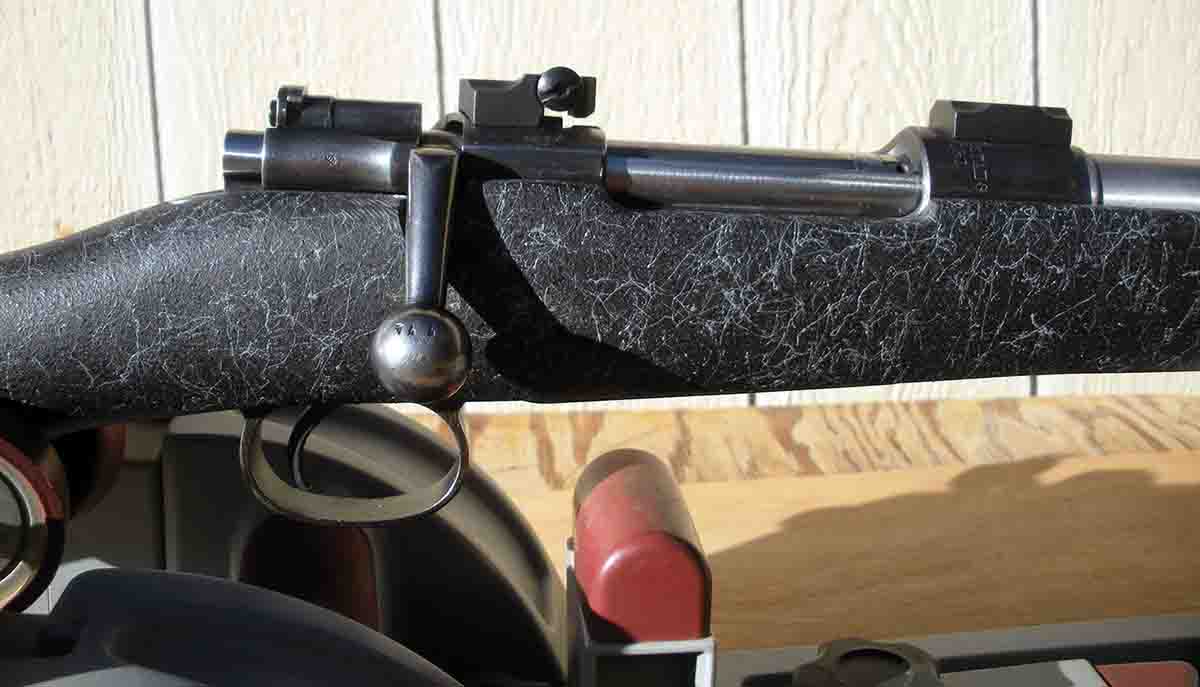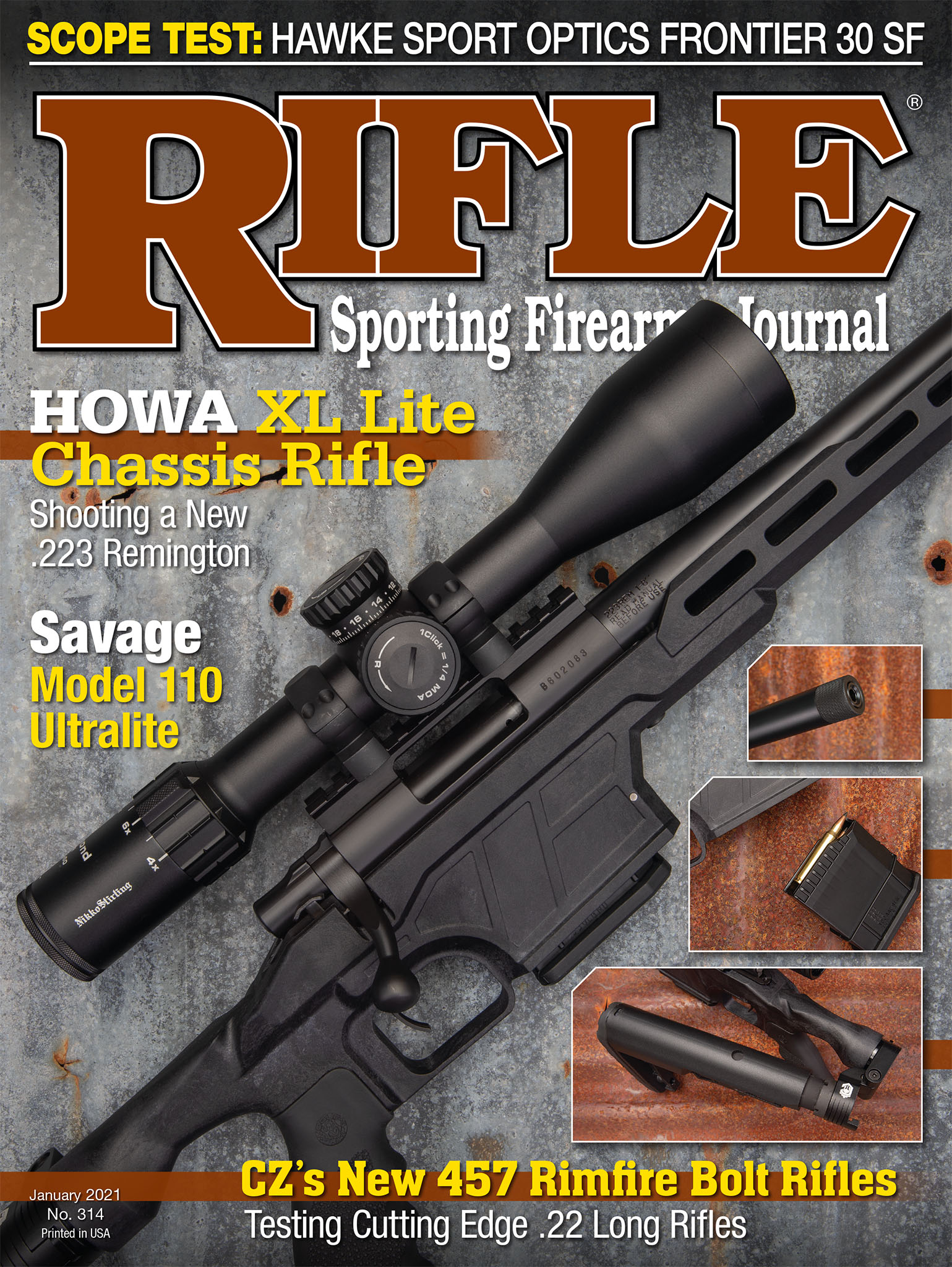Spotting Scope
A Brace of Stocky's Stocks
column By: Dave Scovill | January, 21

I came through Prescott in 1978 on my way to somewhere else, noting at the time, you don’t need to come here to get anywhere else. It was by accident, mostly, that I pulled off the side of the road to retrieve a lawn chair that flew out of the boat I was towing by Watson Lake. After traveling nearly a 1,000 miles across the high desert from Oregon, I declared to my passenger, “If I ever retire, this is the place.”

A widower with two children, I answered a call from Al Miller to join Wolfe Publishing as the editor 11 years later; little had changed. Folks still traveled hundreds of miles up the mountain from the Sonoran Desert to take in the cool air and view Watson Lake surrounded by the Granite Dells, or braved the mountain snow in December to marvel at the Yavapai County Court House lighting at “Arizona’s Christmas City,” then left.
The large ranches were still unfenced, and the 23-mile drive to and from work was largely an obstacle course, dodging cattle, horses, goats, deer, antelope, javelina (peccary), rabbits, quail, roadrunners and assorted predators. A new highway is progressing and will bypass Prescott across the prairie to the east, missing Watson Lake and Prescott by several miles, leaving travelers with little to see or reason to stop until they arrive somewhere else.
Fortunately, considering the worldwide circumstances, I’ve been able to stay occupied at home with a couple of projects, starting with the purchase of an Interarms imported Serbian M98 Mauser 7mm Remington Magnum dubbed the M70. It was stocked with mystery wood that has been replaced by a fiberglass handle with aluminum bedding block from Stocky’s, LLC. The action itself is a mirror image of the Interarms Mark X that was bedded in wood and rebarreled to .30-375 Ruger a couple of years back.
Open sights on the Serbian rifle have been retained, and scope bases and rings are ready to install a scope that satisfies weight requirement, hopefully around 8.5 pounds overall. Chances are a standard 3-9x will suffice.
Around the time I retired from Wolfe Publishing, glaucoma and cataracts cropped up in both eyes. Under the care of an ophthalmologist and daily medication, I still have 20/15 vision and can see open sights with clarity, at least well enough to shoot a charging elephant or Cape buffalo at point-blank range, and put a bullet in a hippo’s ear at 90 yards with a Model 86 Winchester. For hunting, I have always shot handguns right-handed with both eyes open and the dominant left eye behind the sights.
At any rate, I got into this business shooting open sights on big-game rifles and fix-sighted handguns, mostly because, aside from Mike Venturino, who wrote for another magazine at the time, no one else was doing that sort of work. It was literally a job opening nobody wanted, and the majority of the rifles I wrote about had open sights to remind folks they offer a legitimate, sometimes necessary, option.
The other rifle is one of three Model 96 6.5x55 Swedish Short Rifles purchased for $50.00 each nearly 20 years ago. One of the three had a threaded muzzle to attach a device for shredding wooden practice bullets, and it has been a bit of a challenge to determine what to do with it, although the original idea included a military hammer-forged barrel from the Ferlach, Austria, gunsmithing school (Buchsenmacherschule) several years back. Finally, it has a new Stocky’s fiberglass stock with an aluminum bedding block installed, but it’s a bit more complicated than that.
Swedish M96 Swedish short rifles, sometimes referred to as M38s, have a 23.6-inch stepped barrel that starts out as one diameter at the receiver ring, steps down before and after the military sight and continues on to the muzzle. All of that has been replaced with a 25-inch, .264-inch cut-rifled barrel with a 1:9 twist chambered for the 6.5x55 by Classic Barrel and Gun Works, Prescott, AZ, (cutrifle.com).
The challenge was the Stocky’s stock that also has steps to match the military stock and barrel. I had hoped the military stock could be replaced with a fiberglass handle that would accommodate a straight taper from receiver to muzzle. Whereupon it becomes a bit complicated to explain the remedy in plain English.

The solution was to cut the barrel channel to fit at the full barrel diameter at the receiver and hit the widest diameter at each step on the stock that forms three points to match the barrel taper. The result is a (almost) straight taper on the barrel channel that matches the taper on the new barrel.
For those who might care, the M96 Swedish Mauser bolt action has a turned down bolt handle and is longer than what we know nowadays as a short action, and shorter than a standard .30-06-length action. That means maximum overall loaded length of the 6.5x55 and 7x57 are about the same at slightly over 3 inches with longer/heavier spitzer bullets. The advantage, if that’s what you want to call it, for using the Swedish M96 Mauser action is that it is a small ring (1.3 inches) and somewhat lighter than the standard large ring (1.4 inches) 7mm Mauser.
The M96 Mauser action also lacks the so-called third locking (safety) lug that is common to the M98, and pressures for the 6.5x55 have been held accordingly to 55,114 psi rather than 60,190 psi for the .260 Remington, for example. Some folks feel that difference in pressure is significant in terms of resultant velocities with whatever bullet weights; some don’t. As a rule, a two percent difference in pressure results in a one percent change in velocity. Do the math and determine if 5,000 psi difference in pressure amounts to a wounded or dead animal at prudent ranges with the bullet weight of choice or not.
I could say something about the fact that most modern bolt-action rifles don’t have a third locking lug either, but that would likely start an argument about tensile strength, etc., ad infinitum. Either way, as I recall, the pressure issue was more likely the result of the Krag 6.5x55 rifle, not the Mauser. In the non-theoretical real world, thousands of dead moose in Finland, Sweden, Norway, etc., over the last 120 years suggest the argument over pressure limits associated with the M96 versus the M98 is dubious at best.

For Doubting Thomases, surveys published in Scandinavia over the last 20 years or so show the 6.5x55 compares favorably and/or exceeds the effectiveness of any belted magnum or non-belted whizbang you can name. Acknowledging that the bullet is the only thing that leaves the gun, what it might be launched from appears to be more or less inconsequential.
Other details regarding the M96 is the conversion from cock on closing to cock on opening. The conversion makes little difference to me since I have used this rifle for 20 years as-is. For reader interest, however, I obtained a Dayton Traister (Oak Harbor, WA) conversion kit from Brownells, and the folks at LRK Mechanical, LLC, (Prescott, AZ) did the work – on schedule and flawlessly. Greg at LRK also glass-bedded the barreled action and about four inches of the barrel to mate with the stock.
LRK also drilled and tapped the front and rear receiver rings and mounted Leupold scope bases. This operation also requires that the typical bump at the front of the rear receiver ring be contoured to accommodate the windage base.
When the magazine is empty, the bolt stops abruptly when it hits the rear of the follower. It is easy enough to cut the rear of the ridge at an angle to allow the bolt face to ride over it. The lower inside of the receiver ring is polished somewhat to allow the nose of the bullet to ride up into the chamber. We are not changing the chambering, so it could stand a little polishing and bluing, but that’s about it. The left rail on the action has a radius cut to allow the thumb of the left hand to push a loaded clip down into the magazine far enough for the bolt to feed properly.
As a sporting rifle with a scope, it is possible to slip the thumb of the left hand under a scope, through the thumb cut and push the cartridges in the magazine down below the bolt face, allowing the bolt to close on an empty chamber. The M96 also has a knurled thumb piece at the rear of the striker to allow the user to uncock the rifle while holding down on the thumb piece and to ease it forward as the trigger is pulled. The cock-on-opening conversion eliminates the thumbpiece.
Other than that, the bolt has been sliding back and forth quite easily for the 20 or so years I have used it, so it appears to be good to go as is, albeit the bolt number on this rifle does not match the receiver number. With a new barrel, the number on the bolt really doesn’t matter, since it is used to headspace with the new barrel.
The M96 is a nicely balanced, no-nonsense rifle that is suitable for the rugged desert, snowcapped mountains or windswept prairie. The Stocky’s stock with a one-inch thick Pachmayr Decelerator buttpad can be left as is with the flaked finish or painted.


